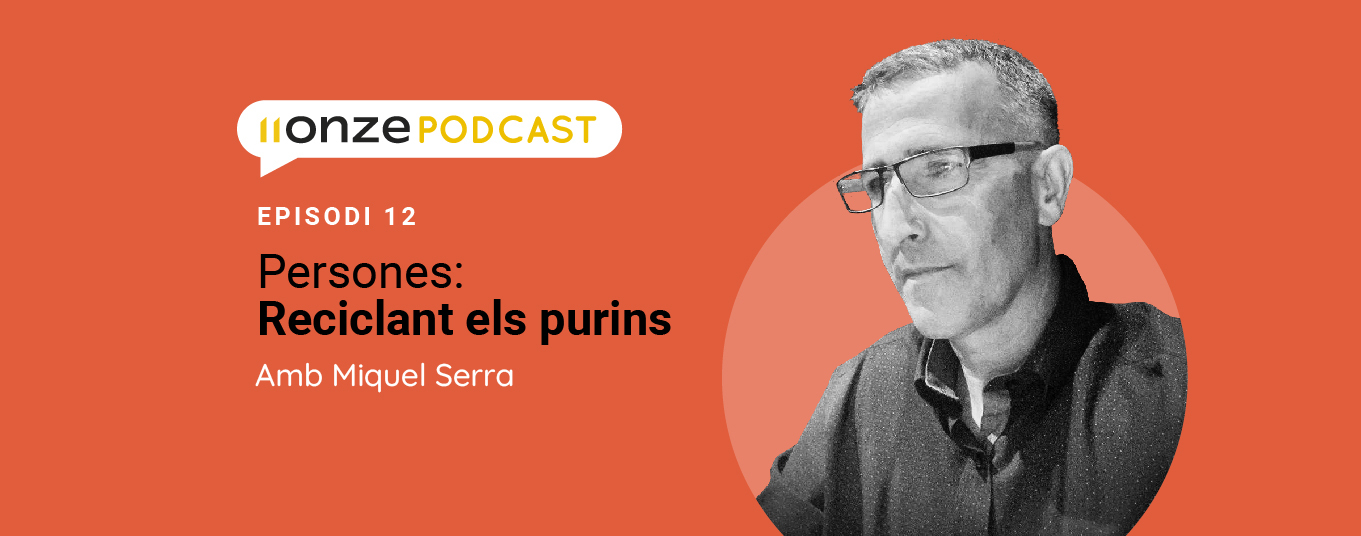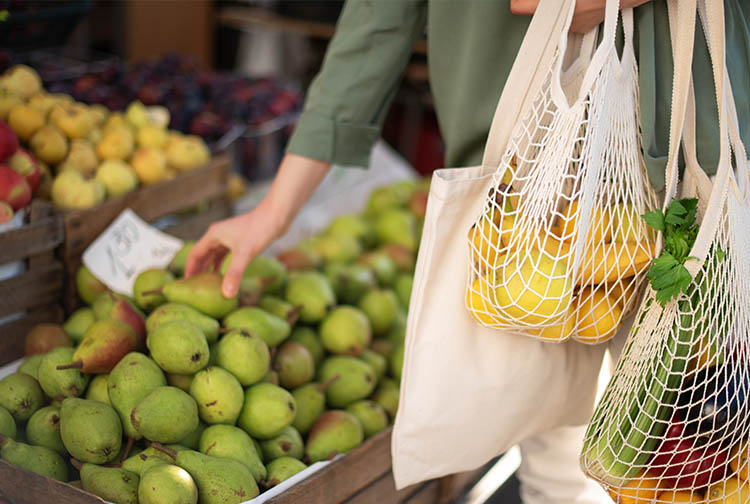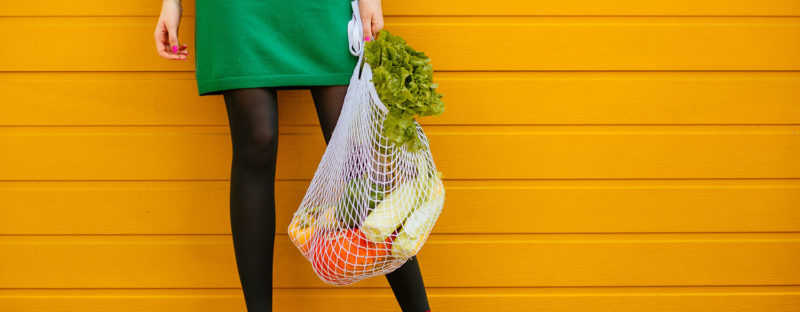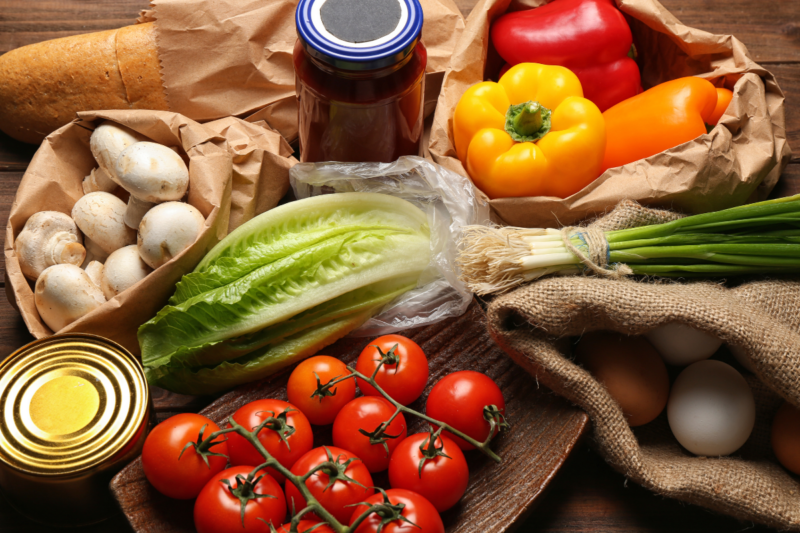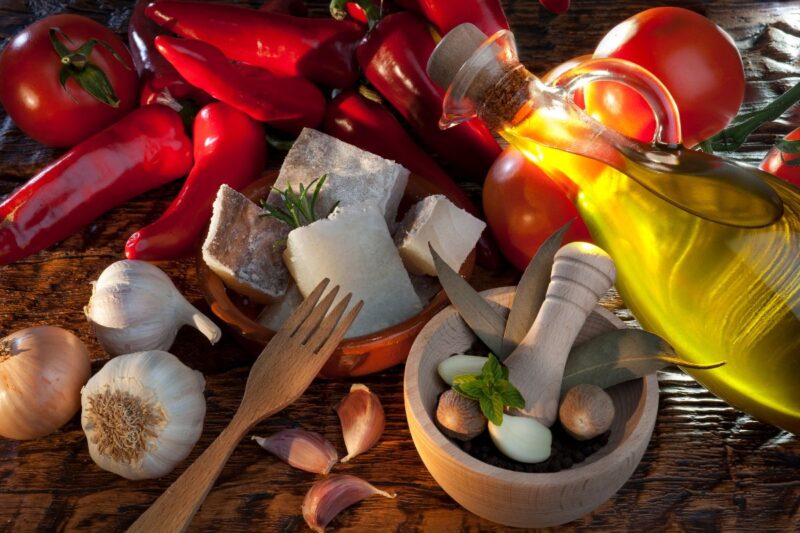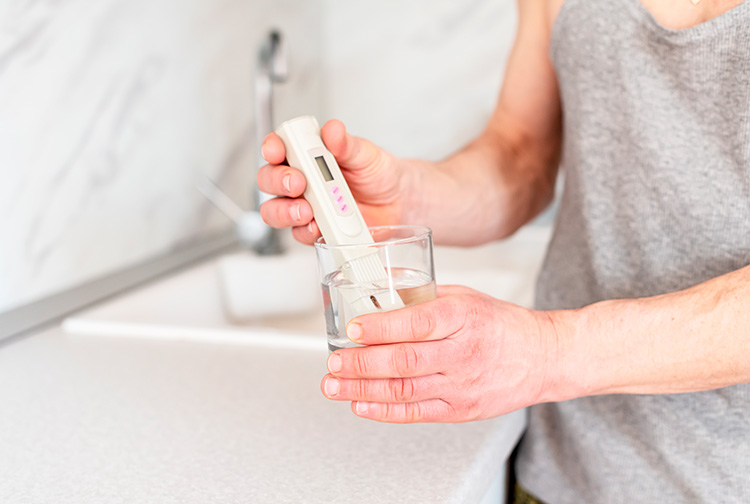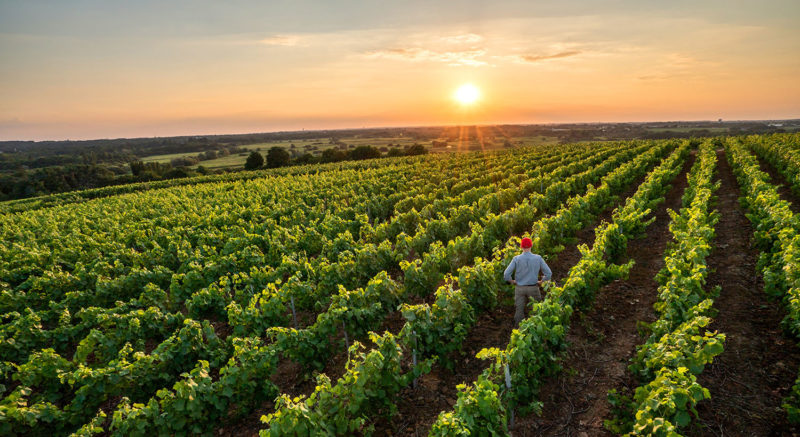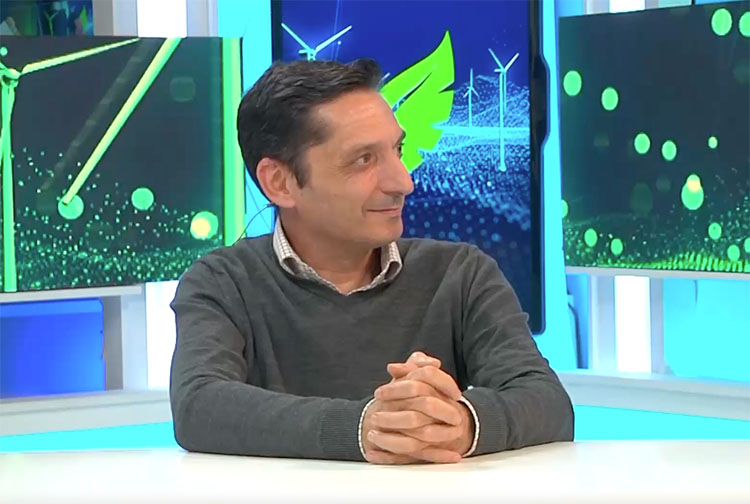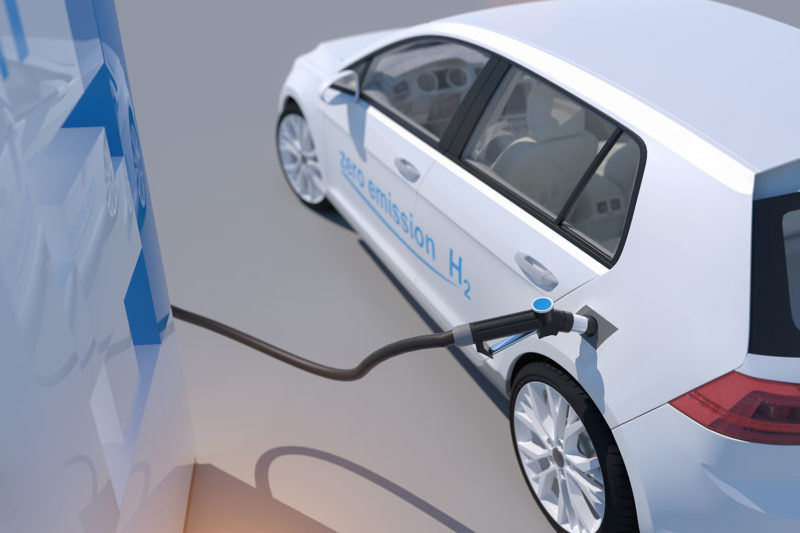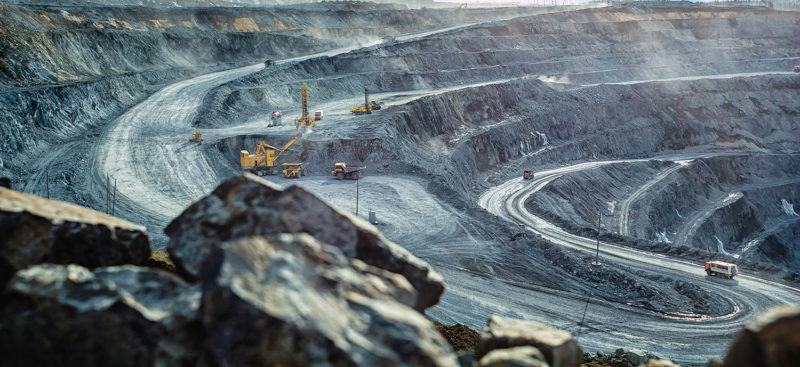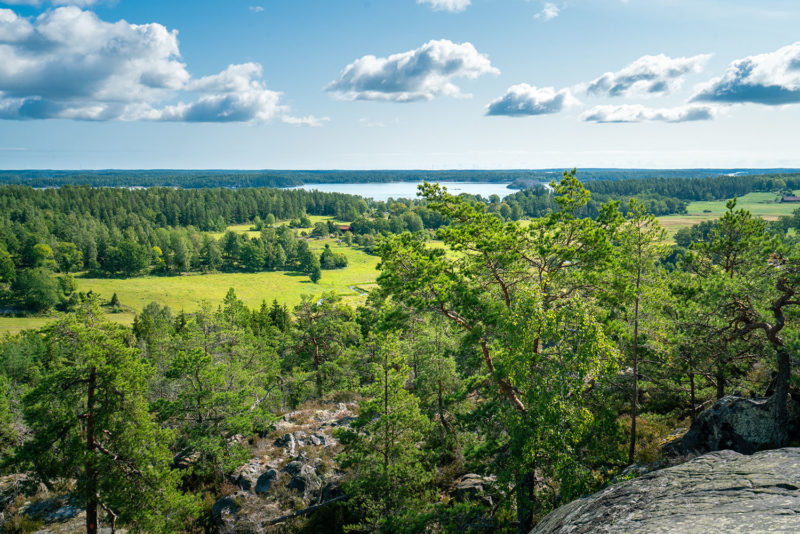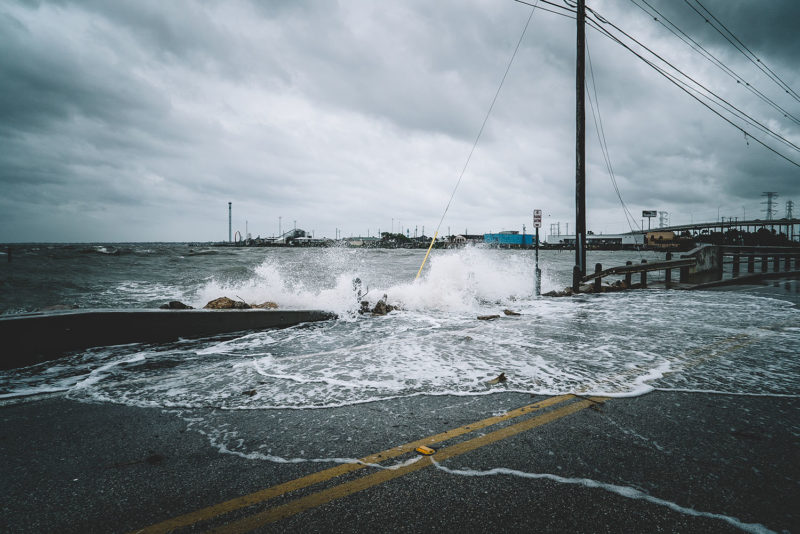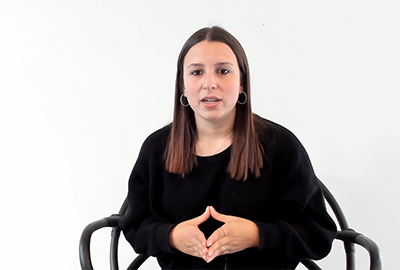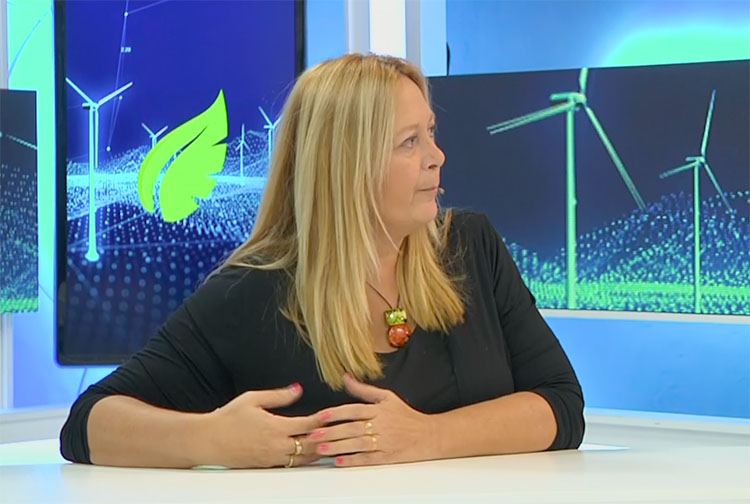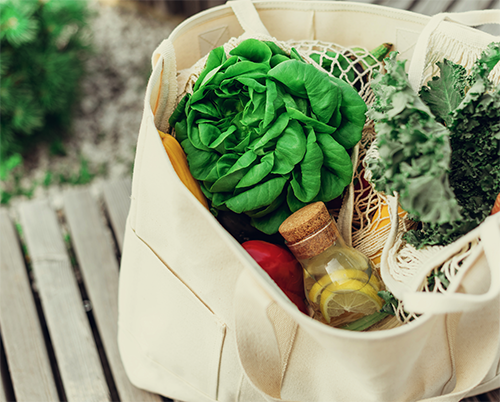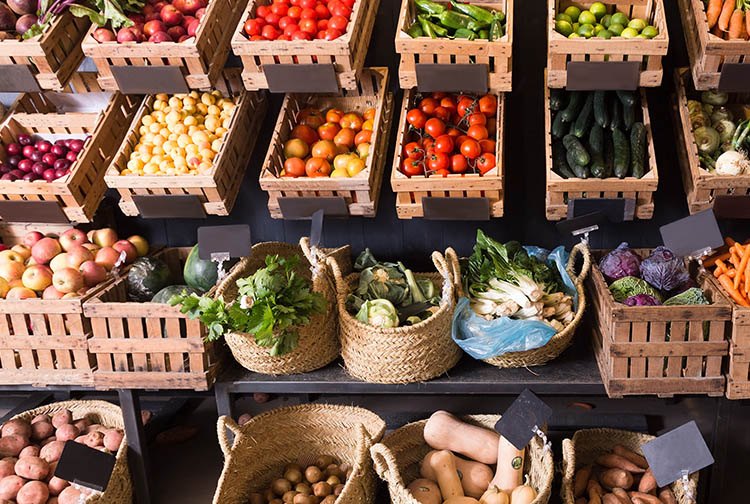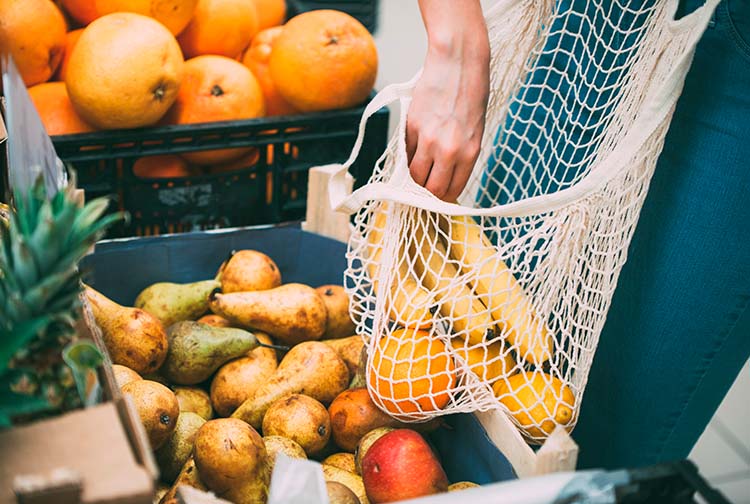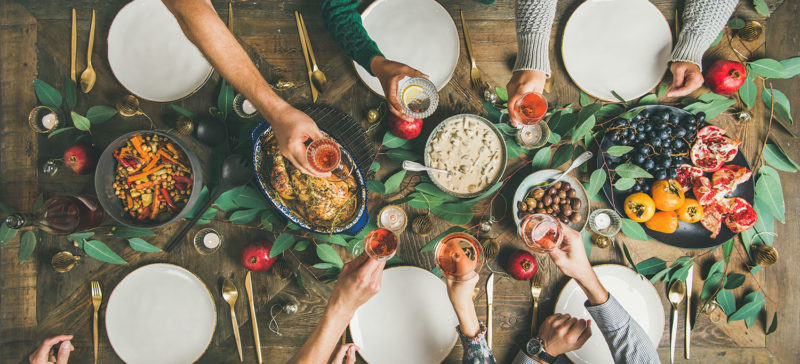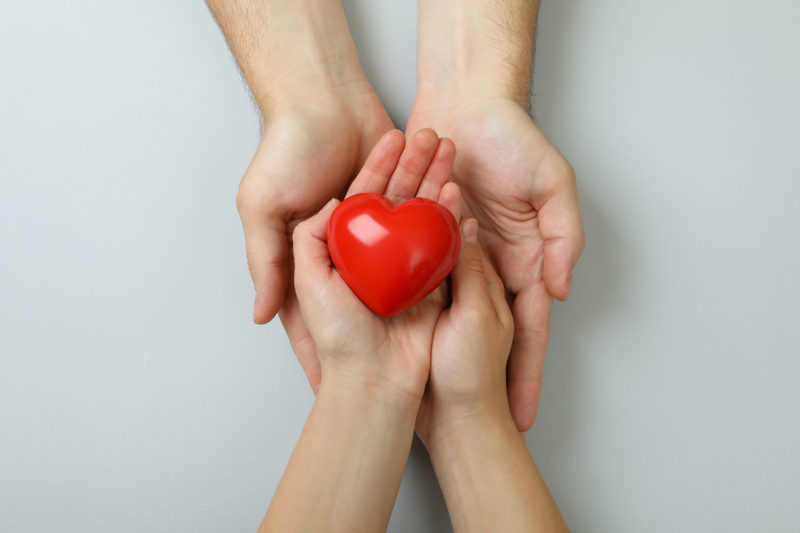Composting slurry, the sustainable solution
How does livestock management affect the environment? Two livestock associations in Segrià (Lleida) have turned the problem of slurry into a solution. They have created a pioneering composting plant in the country. We talk about it in a new episode of People, with Miquel Serra, one of the promoters of the project.
With no more than 10,000 inhabitants, Alcarràs is the municipality in Europe with the highest density of farms per square kilometre. In total, it has 45,000 steers, 35,000 pig mothers, and some 250,000 fattening cattle. That is why, for the neighbours, the management of the nitrogen produced by the slurry was of the utmost importance to comply with European environmental standards. This is how the composting plant project was born, promoted by the two large livestock organisations in the municipality, to convert the slurry into fertiliser.
And they did it collectively, as Serra recalls. The project cost them 1.5 million euros. “Cattle manure is better managed. And on pig farms, where we have solid and liquid manure separators, we were interested in being able to manage solid manure. The composting plant had to allow us to manage both manures separately, because cattle manure is classified as organic production, and pig manure is not, although it can be used for conventional agriculture,” explains Serra, who is a member of the driving force behind Alcarràs Bioproductors.
An exceptional case
And why aren’t there more composting plants like the one in Alcarràs all over the country? “Until now, all composting plants have been set up by people who wanted to do business. And one way was to manage other by-products that are difficult to treat and for which the businesses paid the composting plants. This is what made them viable”, explains Serra.
On the other hand, in Alcarràs they wanted a manure and slurry composting, without looking for profitability first, but rather the environmental benefit and the continuity of their farms, and this makes it a unique case in Spain. “We have to think that our business is to produce meat”, argues the promoter, who explains that, nevertheless, there are already three multinationals that have shown interest in buying the compost they will produce. “In the end, we are convinced that we will manage to make it viable”, he acknowledges.
As for financing, they have not yet considered European funds, because the initiative was born before, but Serra explains that they feel very supported by the Department of Agriculture and the Diputació de Lleida. “Through the BioHub Km 0 project, designed to reactivate the economy of the area, we have been able to manage a small grant that allows us to be more ambitious,” explains Serra. In fact, the composting plant is just the first step towards a larger circular and sustainable economy project. The idea is to generate an alternative that allows us to conserve and value the talent of the territory. Turning slurry into compost may be the ultimate sustainable solution, but more uses are still being investigated. For example, cellulose can be extracted from manure and used to make fabrics. Perhaps the future of sustainable fashion will be to wear clothes made out of manure.
11Onze is the fintech community of Catalonia. Open an account by downloading the super app El Canut on Android and Apple and join the revolution!
The demands of the peasants and farmers, which are part of a European-wide unrest, present the country with a colossal challenge. The one to decide if Catalonia should be food sovereign or if it should renounce its own land. In 11Onze we have it clear: you don’t play with food.
Everyone knows that the primary sector is essential, but it seems that we sometimes forget it. That’s why Catalan farmers, like Europeans, are on a war footing. The demands are simple and could be summed up in one: have some respect for a sector that puts the plate on the table for Catalonia of the 8 million.
Excessive bureaucracy, economic suffocation and regulatory pressure are the battle horses of some farmers who see that the poor conditions in their sector discourage the possible generational change. Nowadays, the peasant is a romantic with a tractor. People who love the land and work for it even if they don’t earn a living. Complaints of having to sell below the cost of production are endemic, and for some time now the lack of protection of farmers against intermediaries, large chains and the importation of products from other countries, which very often do not meet the very demanding regulations that are asked of European farmers and ranchers.
The European greyness
Catalan food sovereignty is in question, in part, due to the European regulatory scourge. The EU, governed from the gray Brussels, pushes its convoluted regulations down. The bureaucratic labyrinth launches itself towards the immediately lower rung of the chain and goes down through the administrations until it falls on its face in front of peasants unable to manage this hellish list. The wisest people in the world, the ones who know how to create food, are asked to also be office workers and collect data and fill in endless forms so that they go up the chain again and satisfy the paperwork thirst of a Brussels bureaucrat.
In December 2022, the farmer and Junts deputy, Salvador Vergés, read in Parliament a list of the measures required of farmers. The clip has gone viral these days as a result of the protests and, if it weren’t for the fact that it deals with such a serious subject, it would make me laugh.
🎙 Ahir, al Parlament, vaig fer una llarga interpel·lació a la Consellera reclamant-li q redueixi la paperassa i la burocràcia q ofega la pagesia. Aquí en teniu un 1r vídeo, on recomano als diputats q s’agafin fort a l’escó x aguantar el ruixat d tràmits d l’exemple q hi explico: pic.twitter.com/2flJLENVa8
— Salvador Vergés i… Tejero! (@vadorverges) December 22, 2022
Drought and priorities
To all the usual problems of the peasantry, this year also added the drought that the whole country is experiencing. The farmers, by decision of the Catalan government, were among the first to receive the blows of the cuts in water consumption. While they had to attend, amazed, a summer tourism campaign without limitations. And they must continue to be surprised, even, seeing the greenery of the golf courses, observing the huge water leaks declared by the ACA and realizing that the water bottling companies are still extracting water from the rivers. Supermarkets are full of plastic bottles filled with water, even though producing plastic bottles pollutes and forces extra water consumption. All to market an essential good that others are denied. Is it normal, then, that the peasants wonder how long the joke will last?
Desolate sovereignty
All this leaves a discouraging picture: that of a country unable to establish and manage its basic priorities. If we are not able to guarantee food production and water, what do we aspire to be? For this reason, the farmers redouble their pressure, although they were already received by the president of the Generalitat, Pere Aragonès. The president often uploads videos on his networks where he is seen cooking recipes. It’s a relaxed way to show off in front of the public, but where do the eggs come from that the Most Honourable uses to make the cake? Where do flour, butter, milk, meat, apples, or artichokes come from? The answer of an urban politician would be simple: from the supermarket.
At a time when it seems that Europe has turned its back on the primary sector to obsess over the war economy, looking at Russia, since 11Onze we want to put ourselves on the side of the peasantry, remembering, once again, the risk of a food crisis that we face.
11Onze is the community fintech of Catalonia. Open an account by downloading the super app El Canut for Android or iOS and join the revolution!
Plogui, nevi o faci sol, el subministrament de l’aigua que consumeixen més del 80% dels catalans segueix en mans d’empreses totalment o parcialment privades. Malgrat els esforços per recuperar la gestió pública d’aquest servei, les multinacionals del sector es resisteixen a perdre un negoci milionari.
A través de l’empresa pública ONAIGUA, el consell comarcal d’Osona va assumir l’abril de l’any passat la gestió del subministrament d’aigua en aquesta comarca, pel que dona servei a 11.400 punts de consum i arriba a més de 25.000 habitants. Es va convertir en el primer consell comarcal a prendre una mesura d’aquest calat.
Podríem dir que es tracta d’una anomalia del mercat, ja que el subministrament de l’aigua a Catalunya està majoritàriament en mans privades. Un reduït nombre d’empreses privades administren i es lucren d’aquest bé preuat al nostre país gràcies a concessions moltes vegades qüestionades. I això que en el món la gestió pública assorteix al 90% de la població i Nacions Unides reconeix l’aigua com un dret humà.
Segons les dades de la plataforma Aigua és vida, més del 80% dels catalans obtenen l’aigua a través d’un servei totalment o parcialment privatitzat, mentre que el que el servei públic no arriba ni al 20% de la població. Aquest desequilibri s’explica pel domini del model privat en els municipis amb un major volum de població, que són els més rendibles.
Pressió per a municipalitzar un servei bàsic
Davant aquesta realitat, existeix una creixent pressió per recuperar la gestió pública d’aquest servei. L’Associació de Municipis i Entitats per l’Aigua Pública (AMAP) ja compta amb 68 membres i representa al 47% de la població de Catalunya. Recentment, publicava un informe amb propostes de reformes legislatives per canviar aquesta situació.
Sis municipis, l’Associació de micropobles de Catalunya i una nova empresa pública es van sumar a aquesta entitat l’any 2022. Dels nous municipis, només Mieres (la Garrotxa), Collbató (Baix Llobregat) i Torroella de Montgrí (Baix Empordà) gestionen directament l’aigua. Castelló d’Empúries està en procés de municipalitzar el servei, mentre que Manlleu i Sitges encara estan lligades a concessions per més d’una dècada amb Sorea i Agbar. Quant a l’Associació de micropobles de Catalunya, cal tenir en compte que el 70% dels municipis de menys de mil habitants, que són els menys rendibles, ja gestionen directament el subministrament d’aigua.
Gairebé un monopoli
Tot i que les empreses privades que gestionen l’aigua a Catalunya es presenten amb diferents noms segons el municipi, la majoria pertanyen al grup Agbar, que està valorat en uns 3.000 milions d’euros.
Aquest grup controla totalment l’empresa Sorea i posseeix gairebé el 80% de la Companyia d’Aigües de Sabadell (CASSA), el 68% d’Aigües de Rigat (Igualada) i el 49% de l’Empresa Municipal Aigües de Tarragona (Ematsa). A més, té al voltant del 35% de Mina Pública de Terrassa i el 31% de Girona SA.
Els seus beneficis no sols provenen de la venda d’aigua, que l’any passat pretenia encarir un 7,4% a Barcelona. També de la subcontractació de serveis a les seves filials. Això permet que a la Ciutat Comtal, per exemple, el cost dels comptadors d’aigua per a l’usuari final acabi més que triplicant el cost original. Això suposa uns 17 milions d’euros de benefici addicional a l’any.
Estratègia de judicialització
Davant un negoci d’aquesta grandària no resulta estrany que Agbar porti als tribunals qualsevol iniciativa encaminada a recuperar la gestió pública del subministrament d’aigua, com detalla el portal ctxt. Només a Barcelona, aquesta multinacional i les seves entitats afins han presentat una quarantena d’accions judicials.
La seva estratègia d’empantanar judicialment aquests processos per dilatar-los o diluir-los ha fet que fins i tot posés un contenciós contra un simple conveni entre l’Ajuntament de Barcelona i l’Àrea Metropolitana per a l’intercanvi d’informació entre institucions.
Un dels casos més sonats té a veure amb la consulta que l’Ajuntament de Barcelona volia impulsar per conèixer l’opinió de la ciutadania sobre una eventual gestió pública de l’aigua. Diverses entitats, entre les quals es troba Agbar, van interposar recursos. Finalment, el Tribunal Superior de Justícia de Catalunya (TSJC) va suspendre el reglament de participació ciutadana en la part relativa a les consultes i va impedir que la iniciativa tirés endavant.
El cas que afecta un major nombre de municipis és el que Agbar va impulsar contra diversos consistoris de l’Àrea Metropolitana de Barcelona. Inicialment, una sentència del TSJC en 2016 va anul·lar la concessió a Aigües de Barcelona del subministrament d’aigua en diversos municipis del cinturó metropolità, amb la qual l’empresa s’assegurava el servei a gairebé tres milions d’habitants durant 35 anys i uns ingressos de 3.500 milions d’euros. El tribunal veia “motius d’anul·lació per vicis en el procés de contractació” quan es va constituir l’empresa mixta en la qual participava Agbar. Tot i això, el Tribunal Suprem va revocar aquesta sentència l’any 2019 en considerar que el procediment emprat per l’Administració per adjudicar el servei sense concurs públic estava avalat per la Llei de contractes del sector públic.
Pràctiques tèrboles
Com denunciava Eloi Badia, regidor d’Emergència Climàtica i Transició Ecològica de l’Ajuntament de Barcelona, les tèrboles pràctiques d’Agbar per aconseguir concessions l’han dut a ser imputat en tres macrocauses judicials (Pokémon, Púnica i Petrum), a més de ser expulsat en 2017 de la gestió de l’aigua a Girona després de demostrar-se la seva vinculació amb la trama del 3%.
Els informes d’aquesta última causa constataven que, durant més de dues dècades, els gironins van pagar més d’1 milió d’euros de sobrecost pel servei d’aigua. A més, l’Agència Tributària advertia que els directius de l’empresa havien carregat despeses personals a la societat i va concloure que Girona SA havia cobrat centenars de milers d’euros per serveis no prestats.
Com expliquem en l’article “Els serveis públics, cada vegada més privatitzats”, la privatització de serveis essencials avança de manera implacable a Europa des dels anys vuitanta. I això està tenint un preu inqüestionable per al conjunt de la ciutadania. L’agent d’11Onze Jordi Coll apunta que aquest procés ha suposat sotmetre la prestació d’aquests serveis “a la lògica de criteris de mercat i, per tant, dels beneficis privats”.
Si vols descobrir com beure la millor aigua, estalviar diners i ajudar al planeta, entra a Imprescindibles 11Onze.
Extreme weather events pose the greatest risk to humanity over the next decade, according to the World Economic Forum’s latest Global Risks 2024 Report. Still, misinformation and economic uncertainty are the main concerns in the short term.
The World Economic Forum’s annual Global Risks report analyses the main challenges facing the world two and ten years ahead. It also examines possible partnerships and different approaches to address these global risks.
While preparing the 2024 report, 1,490 experts from academia, business, government, the international community and civil society were surveyed. To complement this data, the Executive Opinion Survey (EOS) of 11,000 business leaders in 113 economies has been added to identify the risks that pose the most serious threat to each country.
A total of 34 global risks are analysed, including technological and economic factors, as well as social and geopolitical risks. A global risk is defined as the possibility of an event or condition occurring that would adversely affect a significant proportion of the world’s GDP, population or natural resources.
Main global risks linked to climate change
Changes related to the climate emergency, such as extreme weather events, loss of biodiversity, collapse of ecosystems or scarcity of natural resources, represent the greatest threat to humanity in the next ten years.
Two-thirds of respondents are concerned about extreme weather events over the next decade, a factor that also ranks second in terms of risk over the next two years. In this case, 5 of the top 10 global risks are related to the environment and climate change.
Among the heads of civil society organisations, Kirsten Schuijt, Director General of WWF International, warned that “unless we take urgent action, the threat will only intensify and bring us closer to inflicting irreversible damage on society and ecosystems”. Indeed, studies show that potentially irreversible changes to the planet could occur by the 2030s if temperatures continue to rise.
Increased risk of disinformation and social polarisation
Disinformation, including that generated by artificial intelligence, and social and political polarisation are second and third in the ranking of concerns. Polarised societies are more likely to rely on information (true or false) that confirms their biases. In the short term, disinformation may affect 4 billion people who will vote in 60 countries in 2024.
The report warns that governments will increasingly be in a position to determine which narrative is considered “the truth”, which could allow political parties to monopolise public discourse and suppress dissenting voices. Disinformation is therefore expected to continue to be used by domestic and foreign actors to widen socio-political divisions.
In this context, social polarisation emerges as one of the main risks that are interconnected with economic recession and lack of opportunities. Moreover, geopolitical tensions and armed conflicts are severely affecting the livelihoods of millions of people, and increase the possibility of war with global consequences.
If you want to discover the best option to protect your savings, enter Preciosos 11Onze. We will help you buy at the best price the safe-haven asset par excellence: physical gold.
Clean hydrogen is presented as the fuel of the future, promising to provide carbon-neutral energy. However, it is not the first time that hydrogen has been hailed as the energy of the future only to run up against high production costs and difficulties with transport and storage, delaying its market introduction. Is it here to stay?
Hydrogen produced from fossil fuels, usually by the process of reforming with natural gas, is mainly used in the chemical and refining industry, and its production is responsible for the emission of 830 million tonnes of carbon dioxide per year. Yet it is less toxic and more easily dispersed than natural gas.
While clean hydrogen will largely avoid this pollution, there are still drawbacks to be addressed. Currently, hydrogen storage requires extremely high pressure and is therefore too expensive and inefficient for widespread use in the automotive industry.
China, known as the Asian giant and the world’s leading producer of hydrogen made from hydrocarbons, and other countries such as Australia, Saudi Arabia, Germany, Spain, and Chile are beginning to make the transition to clean hydrogen with multi-million dollar projects that suggest green hydrogen is here to stay.
What is green hydrogen?
Although hydrogen is the most abundant chemical element in the universe, and the third most abundant on the Earth’s surface after oxygen and silicon, it is not a primary energy form per se, but a chemical compound, which exists in combination with other elements, and which can have energy uses.
Just as conventional hydrogen obtained from hydrocarbons requires large amounts of energy and is a costly process, clean hydrogen, also known as renewable hydrogen or e-hydrogen, is generated from electricity from renewable energy sources, through a process called electrolysis of water. Electrolysis is a chemical process that uses electricity to separate hydrogen from oxygen in the water.
The fact that it emits no pollutant gases when produced makes it 100% sustainable, but the production costs are higher than with traditional hydrogen. Despite this, energy experts expect the price of clean hydrogen production to drop considerably over the next few years to match that of hydrogen produced from hydrocarbons.
The European Union does not want to be left behind
Europe wants to avoid losing its leadership in green hydrogen to China, as happened with solar panels. To this end, it has launched an industrialisation plan within the framework of the Horizon Europe project, to promote and accelerate research and development of green hydrogen with an initial investment of 2 billion euros.
The aim of the project is to scale up green hydrogen electrolysers, which are used to split water into hydrogen, and thus reduce the cost of a technology that is currently too expensive to compete in the market. The goal is to build hydrogen clusters deployed across Europe, and to bring together hydrogen-related infrastructures, as has been done with the electricity grid.
The introduction of new renewable energy sources in the coming years will be crucial for the environment. We, the common people and the planet, can now welcome the geopolitical competition between the major global economic powers to lead this new energy source.
11Onze is the fintech community of Catalonia. Open an account by downloading the super app El Canut on Android and Apple and join the revolution!
European farmers are up in arms. Rising costs, the removal of subsidies, new environmental measures and cuts to finance the war in Ukraine are strangling a sector that is essential to the continent’s food sovereignty and has become the scapegoat of the Eurocrats.
After seeing the images of half of Germany blocked by the avalanche of tractors heading towards the Brandenburg Gate, one might think that you reap what you sow. Europe’s political class has long been fomenting discord against the agricultural sector, and it was only a matter of time before one day or another it paid the consequences.
These protests are the latest in a series of farmers’ demonstrations across Europe. Previously, similar demonstrations have been seen in the Netherlands, Belgium, France, Spain and other European states, where farmers have also taken to the streets to express their dissatisfaction with the effects of planned environmental reforms and high production costs.
The casus belli of the German rural revolt
Although grouping all the demonstrations under a common denominator is tempting, they have mainly been triggered by specific national situations. The German agricultural sector is opposed to proposed cuts in fuel subsidies used in agriculture. An austerity policy that the German government argues became necessary after a Constitutional Court verdict prohibited the coalition government from transferring 60 billion euros in appropriations to mitigate the effects of the pandemic on the fight against climate change.
The cuts were intended to eliminate the existing tax benefits for diesel and the road tax exemption for agricultural and forestry vehicles. This would have allowed the federal government to save almost 1 billion euros in additional revenue from the official amount it has to save in the 2024 fiscal year – still pending parliamentary approval – of around 17 billion euros out of a budget of 450 billion euros.
This is against the backdrop of the war in Ukraine and sanctions on Russia. The war, instigated and perpetuated by the US and its client states in Europe, has been devastating for the German economy and industrial sector. Yet Berlin has pledged more than 17.1 billion euros in military aid to Ukraine from 24 January 2022, the same amount it would have to save through cuts during 2024.
But of course, these billions of euros in military “aid” are recycled into the German military-industrial complex which, like the one of the United States, is making a killing from this war, courtesy of the taxpayers and farmers who suffer the cuts because there is no money and the Ukrainians who serve as cannon fodder for the corporate interests behind these conflicts. As President Biden keeps repeating to keep the funds flowing, the money going to “Ukraine” is a good investment.
Climate targets vs. food sovereignty
Despite the loss of more than 5 million farms since 2005, a decline of 37%, Europe is generally self-sufficient in most foodstuffs. However, support for farmers provided by the Common Agricultural Policy is essential in ensuring the continuity of farms and crops in the EU. Especially since the increased costs caused by the sanitary crisis, the logistical funnel and the war in Ukraine.
Eurocrats in Brussels are nervous about the agricultural revolt on the continent. The EU has set a global goal of zero emissions by 2050, and EU officials are concerned that the outpouring of protests could set back the ambitious climate targets set by the European Commission.
According to Greenpeace, the current system, which pushes farmers to run large, intensively industrialised farms is broken and protesting for business as usual will not help. In any case, the situation of political neglect in which the rural world finds itself is unsustainable. The transition to a more sustainable model has to guarantee much more than the mere survival of the sector.
11Onze is the community fintech of Catalonia. Open an account by downloading the super app El Canut for Android or iOS and join the revolution!
After a temporary reduction caused by the pandemic, the carbon footprint is growing again and climate change is accelerating. Individuals, businesses, and regulators can help reduce greenhouse gas emissions. Let’s look at how it is evolving and what measures would help mitigate it.
The energy needs of human activity alone generated 36 billion tonnes of carbon dioxide (CO₂) in 2022, according to the International Energy Agency. A benchmark for the magnitude of this figure? Suffice to say that the entire world population put on a scale would not amount to 400 million tonnes. In other words, the CO₂ we emit in just one year is one hundred times the weight of the whole of humanity.
Carbon dioxide is the most abundant greenhouse gas and has contributed most to global warming in recent decades. Direct and indirect emissions of carbon dioxide, together with methane, nitrogen oxide, sulphur hexafluoride, hydrofluorocarbons, and perfluorocarbons, make up what is known as the “carbon footprint”. This is an environmental indicator coined in the 1990s to measure the contribution of human activity to global warming.
The reality is that we are far short of the targets set to halt climate change. Scientists warn that net CO₂ emissions should be reduced to zero by 2050 if we are to avoid catastrophic consequences. Rising global temperatures lead to extreme weather events and rising sea levels due to melting ice.
Climate emergency
The UN estimates that since 1990 carbon dioxide emissions have increased by almost 50 percent. In fact, the World Meteorological Organisation notes that current levels of CO₂ in the atmosphere are similar to those of three million years ago, when the Earth’s average temperature was 3°C higher and sea levels were much higher than they are today.
It is, therefore, logical that one of the Sustainable Development Goals set by the UN should focus on the need to curb climate change. The formula is to take measures that will lead us to a low-carbon economy in the coming years.
In fact, the vast majority of the world’s countries signed the Paris Agreement in 2015, an international treaty that aims to limit global warming. Yet, our carbon footprint has continued to grow. Greenhouse gas emissions were only reduced in 2020. And the reason was the economic slowdown caused by the pandemic.
The Climate Transparency Report estimates that emissions from the G20 countries, which are responsible for 75 percent of greenhouse gases, grew by four percent again in 2022. China, India, Indonesia, and Argentina are already at higher levels than in 2019.
By geographical area, China, the United States, the European Union, and India account for more than half of the gases emitted in the last decade. In terms of activities, those producing the most CO₂ are power and heat generation (40%), transport of goods and people (20%) and industrial activity (20%).
Calculate your personal carbon footprint
The amount of greenhouse gases that each individual generates in their daily lives as they move around, eat and consume resources is known as their personal carbon footprint. To avoid a global temperature rise of more than 2°C, The Nature Conservancy, an environmental NGO, estimates that we should halve it by 2050.
There are numerous tools available to calculate your personal carbon footprint. In particular, the UN calculator takes into account aspects such as the characteristics of our home, our energy consumption, the type of transport we use on a daily basis, the amount of flying we do, our eating habits, and how much we recycle.
Some measures to reduce our personal carbon footprint are to opt for responsible consumption, commute in a more sustainable way, moderate our energy consumption and reduce the amount of waste we generate.
The weight of business
Far greater than the personal carbon footprint is the footprint left by businesses in processes such as manufacturing or transporting goods. This is known as the corporate carbon footprint. Hence, the importance of focusing on this area to reduce global warming.
Businesses can reduce their environmental impact by improving their energy efficiency or increasing the percentage of renewable energy they consume. They can also use offsetting tools, such as investing in environmental projects, paying green taxes or buying CO₂ emission rights.
A growing trend
Thousands of companies already publish their carbon footprint, but not all of them calculate it in the same way. Most large multinationals ignore indirect emissions, those that are part of their value chain but do not depend directly on them.
A paradigmatic example is Amazon. Pressure from activists and investors led this online retail giant to make its carbon footprint public for the first time last year. However, it has just been revealed that in its report it only accounted for a small part of the emissions generated by its sales.
Unlike other retailers, Amazon only accounted for the total environmental impact of its own products, which account for only 1% of its sales. The company does not account for the emissions generated by the use of another brand’s product once its delivery drivers deliver it to the customer.
An incentive for sustainabilityThe high impact of business activity on the environment has led more and more people to call for companies to be required to publish their carbon footprint in their annual reports.
So much so that the Securities and Exchange Commission, the US stock market regulator, has just proposed that listed companies in the US have to disclose their greenhouse gas emissions. And, very importantly, that they do so according to the same criteria.
Forcing companies to publish their carbon footprint can, according to many experts, make a decisive contribution to shortening the path to an emission-free economy. More and more investors are taking environmental issues into account in their investment decisions.
11Onze is the community fintech of Catalonia. Open an account by downloading the super app El Canut for Android or iOS and join the revolution!
Un cop s’acaben les festes nadalenques, és hora de posar ordre a tanta decoració. Sovint l’avet, el pessebre o el tió són els objectes més preuats de la casa, però també els més difícils de reutilitzar i reciclar. A 11Onze et donem quatre consells per endreçar per Nadal de la manera més sostenible.
L’avet, les garlandes, les boles, els llums de colors, els paraments de taula… Abans de posar-nos a recollir tots els guarniments nadalencs, hem de tenir clara una cosa: com més sostenible sigui el material que fem servir, millor. Les vaixelles? De ceràmica! Les estovalles? De fil! Les garlandes i les boles? De paper i de vidre! L’avet? Natural! I el pessebre? El pessebre és per tota la vida.
- Cada cosa al seu lloc, i quan toca. Sembla una obvietat, però el primer consell per fer endreça de casa, amb tant guarniment i tanta teca, és conèixer bé perquè serveix cada contenidor de residu. Ho repassem: el verd és el per al vidre, el blau per al paper i el cartó, el groc per als envasos plàstics i metàl·lics, el marró per a la brossa orgànica i el gris per a la deixalla sobrant. I recorda, l’oli també es pot reciclar! Si tens dubtes, sempre pots consultar la pàgina web de l’Agència de Residus de Catalunya. A més, aquestes festes també hem de procurar no baixar les deixalles en dies festius, no sigui que la festa de brossa ens la trobem a la vorera l’endemà.
- No desaprofitis menjar. Els experts asseguren que cada any es malgasten fins a 1.300 tones d’aliment a tot el món. El desaprofitament dels aliments és una de les xacres ecològiques i econòmiques més grans que ha d’afrontar la nostra societat global. Per això, si després de tanta celebració et sobra menjar, potser és una bona idea recórrer a la cuina d’aprofitament. Si realment et sobra menjar sense estrenar, pots preguntar al Banc dels Aliments més proper o alguna entitat social del barri.
- Recull l’avet. Els avets, sempre que siguin naturals, i per això és recomanable que així sigui, es poden reciclar cada any. La majoria de municipis de Catalunya posen a l’abast de la ciutadania punts de reciclatge d’avets. S’instal·len l’endemà de Reis. A Barcelona estan oberts les 24 hores del dia, i n’hi ha a cada districte. Consulta la web del teu municipi per saber on estan ubicats aquests centres neuràlgics del reciclatge nadalenc.
- Reutilitza tant com puguis. Els paraments de Nadal, les garlandes, les boles i tota la resta de decoració nadalenca, inclosos els estimats pessebres, s’han de poder reutilitzar any rere any. Per això, és una bona idea incentivar compres de qualitat i que tots els guarniments siguin un petit tresor familiar que passa de generació en generació.
11Onze és la fintech comunitària de Catalunya. Obre un compte descarregant la super app El Canut per Android o iOS. Uneix-te a la revolució!
Throughout 2019, 931 million tons of food went to landfill. 11Onze wants to give you some tips to repurpose leftover food cooked at home, always taking into account that, wherever in the world it is cooked, the important thing is to learn to cook repurposing each of the ingredients.
We are all aware of the amount of food that will end up in the rubbish, whether at the same point of sale of the products, in restaurants, or at home. According to the food waste report made this year by the United Nations Environment Program (UNEP) together with WRAP, it is estimated that, during 2019, 931 million tons of food was wasted worldwide. The report also states that 11% of waste comes from households, and that, on a global scale, 74 kg of food is thrown away by each household throughout the year. With this amount of food ending up in the rubbish of every household in the world, 11Onze wants to give you some tips on how to repurpose leftover food at home.
Every year, more than 70 kg of food is thrown away in every home in the world
There are thousands of recipes with all kinds of ingredients, thanks to which, with a little imagination, we can repurpose the leftovers of each cooked dish with a few advices that adapt to all kinds of cuisines, because each country has its own cuisine, but we have to know how to repurpose the leftovers of each recipe.
If the dish we cook consists of meat or fish, any recipe will be useful for making good pies, croquettes, or even stuffed aubergines or peppers. If we cook potatoes and we have leftovers, we can use them to make an omelette, an Olivier salad or, for example, a stew. It’s also convenient, when we cook rice, if we make more than needed, to leave it aside without the sauce or the ingredients we want to put in it, so that we can use it for other recipes.
To preserve bread better, as our grandmothers used to do, it is good to keep it covered with a damp cloth: this way, it will not dry so soon. However, if it dries, it can be used to make soups or toasts, or for salads.
It will also be very useful, if we have eggs about to expire, to boil them and use them for soups or salads, or mix them with meat or fish recipes.
And most importantly, let’s not forget to repurpose the fruit that is about to spoil: we can use it to make fruit salads, smoothies, jams, or cakes. In conclusion: the important thing is to reduce the amount of food we end up throwing in the rubbish.
Law against food waste
The volume of food waste in the world is so big and so worrying that governments have had to push for laws to stop it. And, in this sense, the 3/2020 Law of March 11 on prevention of food loss and waste was approved in 2020 in Catalonia. Apart from that, there are different mobile applications where supermarkets and restaurants sell leftover food of the day at very low prices, such as the Too Good To Go app.
There is a lot of work to be done so that food does not end up in the rubbish of every town and city on the planet. 11Onze wants to do its little bit with these tips, wishing that in the very near future, we all act with greater awareness and responsibility against food waste.
11Onze is the community fintech of Catalonia. Open an account by downloading the super app El Canut for Android or iOS and join the revolution!
If you liked this article, we recommend you read:
Has sentit mai l’expressió “Va més guarnit que un arbre de Nadal”? Quan arriben les festes nadalenques, sembla que tot canvia d’aspecte. Els carrers, les botigues, els monuments, les places i les cases s’omplen de decoracions diverses. Però ens hem parat a pensar si tot aquest ritual pot ser una mica més sostenible?
Arbres, cintes, boles, mitjons, llums, figuretes, garlandes, canelobres… Cada any, a principis de desembre, llums i colors s’escampen arreu de la geografia dels països que celebren Nadal. L’encesa dels llums en espais públics s’ha convertit en un ritual social, però també és un ritual per moltes llars dedicar un temps a decorar espais amb elements nadalencs.
Encara que el plàstic continua liderant el material amb el qual estan fetes les decoracions nadalenques, els darrers anys el model de societat d’un sol ús sembla que es comença a posar en dubte. És amb aquesta exigència que els elements naturals cada vegada són més presents a les fires i són una bona alternativa.
Els elements naturals, a més, un cop acabades les festes, són 100% compostables i es descomponen en un espai curt de temps. D’altra banda, si a les moltíssimes fires que hi ha al país no trobes el que busques, sempre hi ha l’opció de fer-los tu mateix, amb el que tens per casa i t’ofereix la natura. Amb una mica d’imaginació s’aconsegueixen fer ornaments únics!
Arbre, garlandes i boles, ‘Do it yourself’
Si bé és cert que tenir un arbre de Nadal artificial, que es pot guardar i tornar a col·locar l’any següent, algú ho pot considerar una pràctica sostenible, perquè el reutilitzes, també és cert que acostuma a ser de plàstic, i, per tant, tardarà uns 400 anys a descompondre’s. D’altra banda, solen ser fabricats a l’altra punta del món i el seu transport ja suposa una petjada de carboni important.
Atenent tots aquests punts, els arbres de Nadal naturals són una de les opcions a tenir en compte. La seva venda està regulada, són de proximitat i els ajuntaments acostumen a fer una recollida passades les festes. La majoria els reciclen, convertint-los en algunes ocasions en compostatge. Una altra alternativa és fer ús de la imaginació i fer un arbre de Nadal amb materials naturals com ara fustes, cordes, palets, cintes, etc.
El mateix passa amb les garlandes i les boles de decoració dels arbres. Acostumen a fer-se amb material plastificat. Tenim alternatives més naturals, com les boles i garlandes fetes amb roba, llana, fruita natural (amb pells de taronja i llimona assecades, que a més aromatitzen l’ambient). A internet trobareu molts tutorials de com fer-ne.
Corones i centres de taula
Les corones de Nadal que es pengen a la porta també poden ser fetes per un mateix. Amb filferro, ferments, cartó, podem fer la circumferència que després podem cobrir amb pinyes, peles de cítrics seques, glans, nous, branquillons d’avet, boles i cors de feltre, de roba, de paper, etc. Podem pintar o no els diferents elements amb colors daurats, coure, vermell i platejat; i posar-hi cintes de colors, com ara blaves, vermelles, daurades i platejades.
Nadal és temps de trobada. Els àpats són un dels moments més rellevants de les festes. Els dinars de Nadal i Sant Esteve, el sopar de Cap d’Any i el dia de Reis són ocasions que requereixen una atenció especial en el parament de la taula.
En ocasions especials, una vegada més, tenir cura dels detalls és important i fer servir vaixella i coberteria d’un sol ús ens pot alleugerir la feina, però també ens suposa fer un munt de deixalles i que l’ocasió perdi glamur: el menjar no té el mateix gust si se serveix amb plat de paper que amb vaixella de porcellana; i tampoc tastarem igual el vi, ni l’aigua.
Així que, si podem, sempre és millor fer servir coberts de metall, vaixella de ceràmica o porcellana i copes i gots de vidre o cristall. Una bona vaixella, també es mereix unes bones tovalles i tovallons i, si són de cotó o lli, millor que de paper o plastificades. I, per donar a la taula un toc personal, es pot decorar el centre fent un camí amb branquetes d’avet natural i espelmes que no siguin perfumades, pinyes, fruits secs, etc. Res de centres alts, que ens privarien de veure el convidat del davant!
Embolcalls de regals: la ‘furoshiki’
Cadascú de nosaltres, segons dades de l’Idescat, generem 1,44 quilos de deixalles diàries. Per Nadal, els residus generats per la ciutadania augmenten un 3%, segons dades de l’Agència de Residus de Catalunya. Les restes de menjar, de vidre i de paper i cartó són les que augmenten més. Per això, és important calcular bé les quantitats de menjar i pensar bé els regals que es fan. Si els regals són útils o intangibles (entrades a espectacles, concerts, massatges, subscripcions, etc.), el volum de deixalles es redueix.
Els embolcalls dels regals també representen una generació extra de residus. Per això, és crucial ser, també, creatius a l’hora d’embolicar els regals. Hi ha moltes maneres de fer-ho, des de fer ús de paper de revistes i diaris, fins a reutilitzar paper d’altres regals. I, una manera innovadora és fent servir un mètode japonès, conegut com a ‘furoshiki’.
La ‘furoshiki’ és una tela quadrangular tradicional del Japó, que es fa servir per embolicar i transportar objectes, des de roba, ampolles i regals. Vindria a ser com un mocador de fer farcells. El regal és embolcallat amb aquest mocador i el que el rep el pot reutilitzar per embolicar un altre regal. Fins i tot, pot ser que torni a les teves mans embolcallant un regal!
Una altra manera de reduir residus és regalar algun objecte que no fem servir. Per fer l’amic invisible és una bona idea: el que tu no fas servir o no t’agrada li pot agradar a una altra persona. Aconseguir que Nadal, una de les èpoques més consumistes i generadores de residus de l’any, sigui sostenible està, també, a les nostres mans.
11Onze és la fintech comunitària de Catalunya. Obre un compte descarregant la super app El Canut per Android o iOS. Uneix-te a la revolució!
